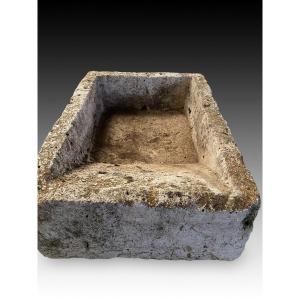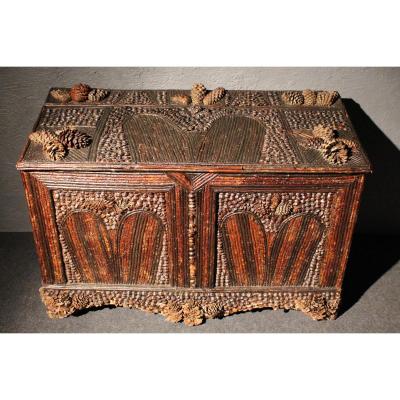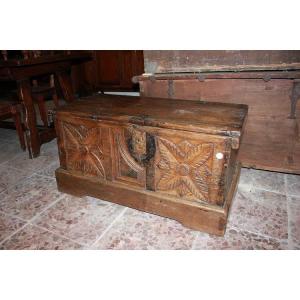Wooden chest with a curved lid and rectangular shape, covered in leather on the outside, with ironwork, handles, nails and two closures on the front, which has a front and top opening. Inside, the lower space accessible from the front is divided in two by a vertical piece of wood; the lid and part of the chest are covered in textile. The back is not covered in leather. The circular-headed nails are arranged in geometric shapes. The handles are decorated with motifs. The ironwork, also worked, follows models based on architectural designs, motifs that are also found in the lock shields on the front. Some metal elements still show traces of gilding. These trunks were called "travel trunks" because they were normally used to store objects while traveling, hence the leather covering and the apparent absence of decoration on the outside. Having two locks allowed for greater security, since both keys had to be used together to open it, and these locks were usually entrusted to two different people. Compare with the 17th century travel trunk of the Viceroyalty of Peru, preserved in the Museum of America (Madrid), which is decorated with animals and plant motifs (stamped leather). Or with the trunk of the Mayorazgo de la Cerda (17th century) preserved in the National Museum of Decorative Arts (Madrid). -
Dimensions: 85x129x65 cm


















































 Le Magazine de PROANTIC
Le Magazine de PROANTIC TRÉSORS Magazine
TRÉSORS Magazine Rivista Artiquariato
Rivista Artiquariato